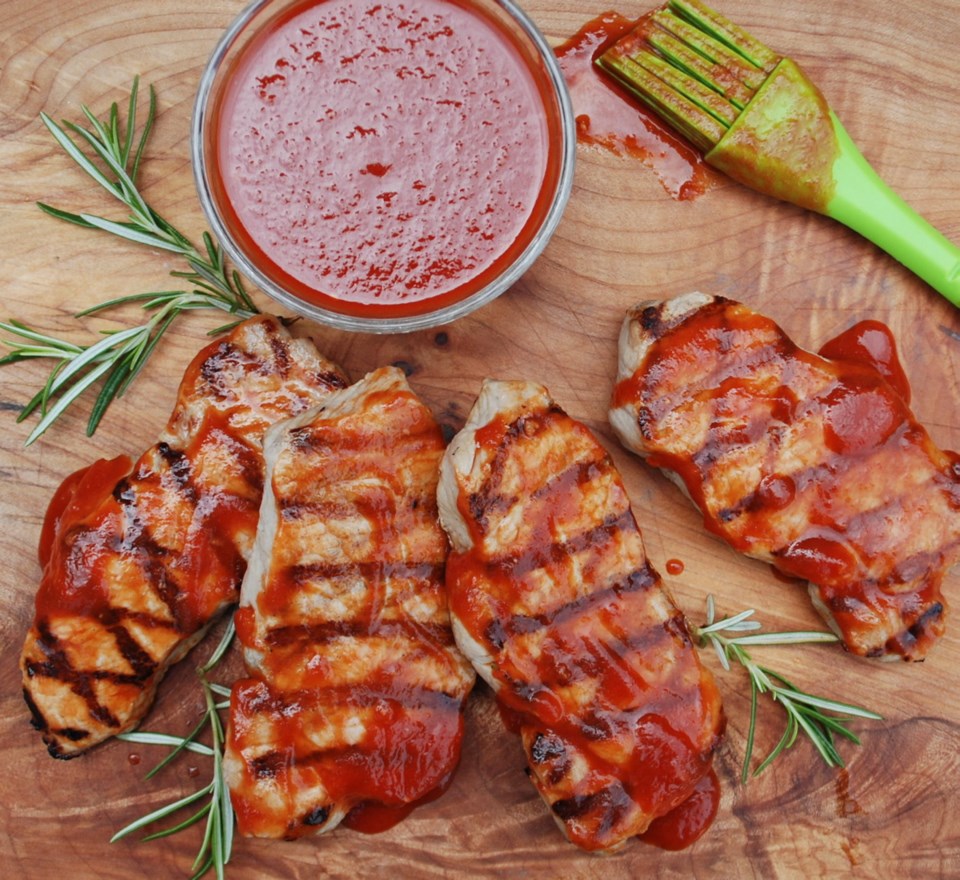As I noted in past stories, in an effort to make pork “the other white meat,” over the years hogs have been bred toĚýyield leaner meat and that program has been successful. According to the 91Ô´´ Pork Council (cpc-ccp.com), all raw, fresh pork cuts, except ribs, when trimmed of visible fat, now qualify as lean meat under Health Canada guidelines.
That lean meat is great if you’re watching your fat intake. But without that extra marbling of fat throughout the meat, what are now deemed extra lean cuts, such as pork loin chops, can turn out quite dry and tough in texture even when only slightly overcooked.
It became natural for many ofĚýus to cook pork that way to kill a parasite sometimes found in the meat called trichinosis. But the 91Ô´´ Pork Council says it is no longer a health risk and years ago it was removed from national surveillance by the Public Health Agency of Canada.
Even if it was still a concern, that parasite is killed at 137°F (58°C), well below today’s suggested recommended final cooked internal temperature for pork of 160°F (70°C). When cooked to this temperature, pork, except ground pork and sausages, may still have just a hint of pink in the middle.
That said, many readers over the years have sent me notes and told me that even when they cook supermarket-purchased pork chops this way they, at best, still turn out just barely juicy, especially when grilled.
One way to infuse some added moisture into those pork chops before they hit the grill is to brine them first. In his book, The Elements of Cooking, Michael Ruhlman says brine is “salt in a solution.”
That solution could simply be salt dissolved in water, but most often it’s also flavoured in ways that enhance the taste of what you’re brining. For example, in today’s recipe, I added alcoholic cider, peppercorns and herbs to the brine, all tastes that work well with pork chops.
A common explanation as to how brine works, notes that because the brine contains a higher concentration of water and salt than the meat, the solution is able to pass into the meat cells through their semi-permeable membranes, adding water and flavour to them.
When you grill those brined pork chops, that added moisture will make them juicier when cooked. Don’t season them with salt before cooking, though, because the brine will have already infused them with a salty taste.
To balance that salty taste, I’ve also brushed the chops with a sweet and tangy barbecue sauce, also infused with the taste of cider.
Ěý
Cider-Brined Pork Chops
Soaking pork chops in a cider-flavoured brine richens their flavour and causes them to be juicier when cooked. Keep in mind, though, that they will also have a saltier taste than chops that are not brined.
Ěý
Preparation: five minutes, plus brining time
Cooking time: six to seven minutes
Makes: four (two chops each) servings
Ěý
2/3 cup hot water
2 Tbsp coarse pickling or sea salt (do not use fine salt)
2 Tbsp golden brown sugar
1 1/3 cups dry alcoholic cider
6 (4-inch long) fresh rosemary sprigs
16 whole black peppercorns
2 bay leaves
8 (each about 100 grams) boneless pork loin chops
2 Tbsp olive oil
• homemade (see recipe below) or store-bought barbecue sauce, to taste
Place the water into a deep, notĚýoverly wide, non-reactive (non-aluminum) bowl. Add salt and sugar and whisk well to dissolve. When water has cooled, mix in the cider, rosemary, peppercorns and bay leaves.
Set chops in the brine, ensuring they are completely submerged. Cover, refrigerate and brine chops eight to 12 hours.
Preheat your indoor grill orĚýbarbecue to medium-high (temperature should be about 400ĚýF inĚýthe chamber). Remove the chops from the brine, dry withĚýpaper towel and set on aĚýplate. Discard the brine. BrushĚýeach chop lightly with oliveĚýoil.
Grill the chops three to three-and-a-half minutes per side, or until just barely pink in the centre. Brush each chop, to taste, with barbecue sauce. Let the sauce heat through a few seconds and chops are ready.
Ěý
Cider Barbecue Sauce
This sweet and tangy, cider-laced sauce is great to slather on porkĚýchops, ribs, chicken and burgers.
Ěý
Preparation: 5 minutes
Cooking time: 30 minutes
Makes: About 1 3/4 cups
Ěý
1 cup dry alcoholic cider
1/2 cup ketchup
1/2 cup tomato sauce
1/3 cup tomato paste
3 Tbsp honey
2 Tbsp cider vinegar
1 Tbsp Dijon mustard
2 medium garlic cloves, minced
• a few splashes Tabasco and Worcestershire sauce
• salt and freshly ground black pepper toĚýtaste
Place ingredients, except salt andĚýpepper, in a medium pot and bring to a boil over medium-high heat. Lower the heat until sauce gentle simmers (small bubbles should just break on the surface). Loosely cover the sauce (don’t completely cover as steam need toĚýescape) and gently simmer about 25 minutes, until thickened and rich tasting. Taste sauce andĚýseason with salt and pepper, as needed. Once cooled, transfer the sauce to a tight sealing jar andĚýkeep refrigerated until needed. Sauce will keep at least twoĚýweeks.
Eric Akis is the author of eight cookbooks. His columns appear in the Life section Wednesday and Sunday.



